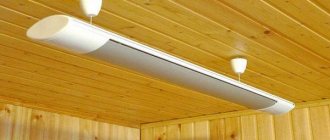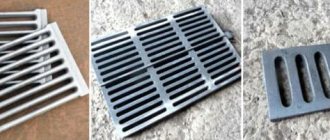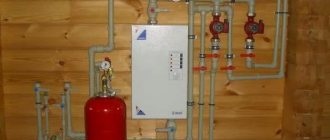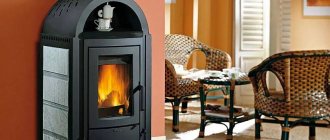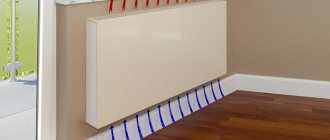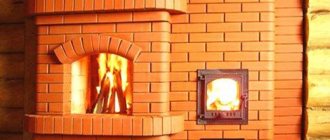Today, manufacturers of climate control equipment produce energy-saving home heaters in large quantities. Let's look at what this type of heating device is and what common features they have. Let's look at what their main types exist, what their advantages and disadvantages are, what the TOP 5 best models look like, what their features are, and also what criteria to pay attention to when choosing them.
A modern, economical radiator brings comfort and coziness to the home Source wixstatic.com
What is an energy saving heater
Unlike centralized heating, an energy-saving heater consumes little energy to maintain the optimal temperature and can be used at any time necessary. This is especially true against the backdrop of a sharp cold snap, an unexpected shutdown of the heating plant, and in any other suitable case. It can be used effectively both in a city apartment, in a private house, and in a country house.
The device is characterized by the following number of operational parameters:
- Independent of central heating supply.
- Portable, compact, lightweight.
- Has high efficiency.
- Operates from household power supply.
- Equipped with clear controls and settings.
- Has quick and easy installation.
- Saves energy.
- Installed in a place safe for children and pets.
- It is characterized by high fire and electrical safety.
- Equipped with an autonomous control system.
- Does not burn ambient oxygen in the room.
- Directs the flow of hot air.
Stylish energy-saving heater for the home Source happymodern.ru
In general, energy-saving heaters for a summer house, house or apartment have a number of distinctive properties discussed above. However, each variety and specific model has its own characteristics, pros and cons. Next we will consider them in more detail.
Classification of heaters
Energy-saving heaters are classified according to six main parameters:
Installation location and type of fastening
- Floor-standing . They are divided into stationary models, such as “warm floor” systems, and movable ones – portable, on wheels, hanging.
- Wall mounted . They are fixedly mounted on the wall surface above floor level. They are characterized by optimal heat distribution throughout the room and a good combination with interior decoration.
- Ceiling . The main properties are installation in the ceiling space, space saving, fast heating, combination with any interior, a wide variety of models.
Ceiling convectors in a private house Source happymodern.ru
Heat transfer principle
- Oily . The air is heated through contact with the hot surface of the radiator.
- Thermal flow . Heating is carried out by passing air flow through heating elements.
- Convection . Heat transfer occurs by natural convection.
- Infrared . Heating occurs due to infrared radiation from the surface. These are primarily halogen, carbon, ceramic, micathermic, film and quartz heaters for the home.
Control system
- Mechanical.
- With remote control.
- Electronic.
- With auto-tuning by timer, temperature sensor,
Type of automation
Energy-saving household radiators are equipped with various automation systems - from a manually adjustable mechanical thermostat to an electronic self-regulating sensor and integration of smart home climate control equipment into a single system.
Radiator with smart control Source ytimg.com
Price
The price of modern economical heaters varies quite a lot - from budget, inexpensive models costing several hundred rubles, to popular branded ones, equipped with advanced technologies, costing several tens of thousands of rubles and more.
Dimensions
The sizes of radiators, as well as prices, vary widely and depend on the type, power, design and purpose - from fan heaters 200x220 mm to thermal panels 1200x600 mm and larger.
In addition, economical radiators differ by manufacturer. Today the market offers the widest offer in recent years from more than two dozen popular manufacturers. Each of them has its own characteristics. Next, we will look at the most popular types of heaters, as well as the TOP 5 models from the best manufacturers.
The best radiators for home and garden Source poisktehniki.ru
See also: Catalog of companies that specialize in home insulation.
Electric heating in a range of heating systems
Electric heaters have become increasingly popular in recent years. This is due to the tendency towards equalization of energy prices. If earlier electricity was much more expensive than the same gas, now its price is approaching this fossil energy resource.
Previously, heating with electrical appliances was used mainly in those regions where there was no centralized gas supply. In which case were electric heating systems the only most convenient and affordable option for heating your home? But this system required large expenses for its operation. Even in comparison with solid fuel equipment, electrical systems are in most cases more expensive. But they are more convenient and do not require time spent organizing the functioning of heating with wood or coal.
To understand the place of electric heating systems in the total mass of heating equipment, let’s consider what types are used. In general, depending on the type of coolant, heating systems are:
- gas;
- electrical;
- on solid and liquid fuel;
- solar systems (solar energy)
- heat pumps.
In modern conditions, the most economical ones are gas ones, since natural gas is an accessible and fairly inexpensive source of heat. Electricity is in almost all cases more expensive, and the costs of solid and liquid fuels depend on their availability and region. Regarding heat pumps: now the equipment for it is quite expensive, but it is one of the most economical among those under consideration. Although these systems are classified as a separate group, they use electricity for their operation, so they can easily be classified as autonomous electric heating.
Most common types
8 most common types of heaters:
Fan heaters
The operating principle is based on a fan passing air through a heated electric coil. A hot directed flow is released into the room. Thanks to this, the room temperature rises quite quickly.
Pros:
- Compact, lightweight, portable devices.
- Specified flow direction.
- Can be used as a fan.
- Versatile installation - on the floor, wall, etc.
- Reasonable price.
- Easy to maintain.
Minuses:
- Noisy work.
- If installed incorrectly, vibration may occur.
- Not effective for large areas.
- Burns oxygen from the air.
- During operation, the smell of burning dust periodically arises.
- Fire hazard.
The simplest inexpensive fan heater Source mcgrp.ru
Convectors
The design is based on a tubular steel heater mounted in a durable thin-walled housing. Heat from the device spreads naturally by convection - heated air rises, cold air goes down.
Advantages:
- High heating speed.
- Does not make noise during operation.
- Possibility of reinstallation.
- Modern models are equipped with thermal controllers.
- Fire safety.
Flaws:
- Consumes a lot of electricity.
- There is no directionality of hot air flow.
- If there is an open spiral, a fire hazard may develop.
Micathermic
They belong to infrared radiators. They heat surrounding objects with thermal radiation.
Advantages:
- Quickly heats surrounding objects.
- Consumes little energy.
- Quiet in operation.
- Does not dry out the atmosphere.
- A wide variety of models according to installation method.
Negative qualities:
- Insufficient heating of the housing itself.
- Heats only those areas where infrared radiation penetrates.
- Not suitable for heating spacious rooms.
- May be harmful at close range.
- High price.
Micathermic heater in the house Source ytimg.com
Video description
For an example of a test of quartz heaters, see this video:
Oily
Mineral oil is used as a heat transfer agent in special compartments with a heater. Thanks to this device, the radiator has sufficient inertia - it retains heat for a long time after being turned off.
Pros:
- Safety.
- Does not burn oxygen and does not dry out the air.
- Reasonable price.
- Does not cause unpleasant odors even when the surface is heavily dusted.
- Does not require maintenance.
Minuses:
- It takes a long time to heat up to the desired temperature.
- Available in floor-standing versions.
- Large mass.
Ceramic
They are thin ceramic panels containing heating elements. Unlike IR radiators, they work like regular heaters - they heat the entire room, and not just the areas exposed to radiation.
Advantages:
- Attractive design.
- Minimum energy consumption.
- Environmental Safety.
- Easy to install and operate.
- Fire safety.
Flaws:
- High price.
Assortment of ceramic radiators for the home Source del.at.ua
Video description
About electric heaters in this video:
When choosing the type of heating radiator, you must proceed from the specific conditions of its further use. Thus, energy-saving wall-mounted quartz heaters for the home, as well as fan heaters, are suitable for heating small areas. Ceramic, convection and oil are suitable for large and medium-sized rooms. If you need to create a full-fledged heating system, then it is better to select a combination of devices of various types - at the installation site.
Oil radiator for home Source dom-expert.by
Reviews
Once you have decided on the type of heater, all you have to do is choose a specific brand and manufacturer. And then most immediately open online store sites with reviews.
Oddly enough, you can find completely opposite opinions on the same models on different sites. It is no secret that often the stores themselves or the moderators of the Internet portal can write certain paid comments and supposedly expert opinions.
Who to believe? Here the advice can be simple.
Try to focus on the reviews that people leave with real photographs of heaters at home in their apartment.
This way, most of the useless advertising information will be eliminated.
Let's take a closer look at the operating principle and each type of heater separately. To view, click on the corresponding tab with the name.
ConvectorInfraredOil Fan Heater
Review of the TOP 5 best models
quartz heater – characteristics :
- Power 500 W.
- IR radiation.
- For a room of 20 m².
- Safety shutdown for overheating and tip-over.
- Mechanical temperature controller.
- Thermostat.
- Possibility of remote smart control.
MEGADOR Group-100 MG – parameters:
- Electric baseboard heater 400 W.
- Increased moisture protection.
- For a room of 6-8 sq. meters.
- Light indication of operation.
- Ideal for heating a bathroom, bathtub, shower, pantry, sauna, hallway, bathhouse.
JARKOFF JK-9002 – features:
- Film radiator in the form of a picture for 500 W.
- Dimensions 1050x600 mm.
- Heating up to 1000C.
- Creates comfortable indoor conditions without drying out the air.
AEG IWQ 120 – characteristics:
- Quartz radiator that heats up in 30 seconds.
- Coverage area up to 20 m².
- Protection from water, wind, corrosion - allows installation in damp rooms.
- Heating regulator.
Nikapanels 330 – properties:
- IR radiator 330 W.
- The dimensions of the porcelain stoneware panel are 600x600 mm.
- Area from 3 to 12 m².
- Heating up to 850C.
- Does not consume oxygen.
- 1st class of protection.
Model Nikapanels 330 Source prom.st
Criterias of choice
Energy-saving electric heaters for home must be selected in accordance with the following series of criteria:
- Power.
- Room area.
- Fire safety.
- Protection class, including against water.
- Control and configuration methods.
- Availability and types of temperature sensors.
- Possibility of remote control.
Power consumption and estimated area are perhaps the two most important parameters when choosing an energy-saving heater. A radiator is considered economical if it consumes no more than 1.5 kW of electricity per hour to maintain the optimal temperature in a room of up to 20 m². Naturally, there are other options for using the device. If it is used additionally, then this figure can be even lower - about 0.3-0.5 kW for the same room.
Room area and device power
First of all, you need to decide what area you need to heat. The device of what power you need depends on this. How to calculate this power?
There is a simple and reliable formula that is suitable for all types of heaters except infrared.
For every square meter of a room with a standard ceiling height, it is advisable to have at least 100W of power.
For an infrared heater, there is an unspoken rule that 100W per 1m2 of area is its maximum power, not its minimum.
To the resulting value you need to add 200W for each window.
It follows from this that, for example, one room with an area of 13 m2 will be quite effectively heated by a model of 1.3 kW + 0.2 kW = 1.5 kW.
What if your ceiling height is 3m or more? Then use a slightly different calculation. Multiply the total area of the room by the actual ceiling height and divide this value by an average factor of 30. Next, also add 0.2 kW per window.
Of course, according to calculations, you can choose a less powerful device, especially for apartments where there is already main heating (central or boiler).
But given the constant heat loss and the fact that it will take longer to warm up the room, it’s better to play it safe. Devices with several heating stages are ideal. The more there are, the better.
Moreover, when the set temperature is reached, the built-in thermostat must turn off the device, no matter what level it is at. And when it decreases, turn it on again. Thereby significantly saving energy.
And also, a more powerful heater, when operated in “half” mode, will serve you much longer than its counterparts selected back to back.
And the area of the sections for heat distribution is higher - hence faster warming up.
Briefly about the main thing
Electric heaters for summer cottages, energy-saving ones for homes and apartments are divided into floor, wall and ceiling. According to the type of heat transfer, there are oil, convection, flow and infrared models.
Depending on the manufacturer, all of them can be equipped with various control, settings and monitoring systems - from a mechanical regulator to smart programming.
When choosing a radiator for specific application conditions, it is necessary to pay attention to such parameters as power, room area, level of protection and fire safety, configuration and control methods, as well as the presence of temperature sensors.
Size and dimensions
It is quite logical to assume that the greater the power of the heater, the larger its overall dimensions will be.
However, note that in many models this only changes the width. But the height and thickness remain unchanged.
This is a very important point when placing heating on the wall and integrating it into other design elements.
At the same time, from leading manufacturers, even with the same power, you can always choose:
- low and very wide, for large windows or stained glass windows
- and vice versa - tall and narrow in small rooms
For example, two models with the same power of 2 kW, but what a difference in the width of the case. Which one do you think will heat better?
